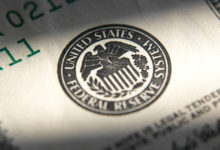First Mover Asia: Traders Focused on Liquidity & FOMC as Asia Opens Its Business Day

Good morning.
Here’s what’s happening:
Prices: Crypto prices continue to remain flat as traders a traders await the FOMC’s decision on interest rates.Insights: Monetary liquidity expectations are one driver moving crypto markets these days, though not in the way many think – even if easing is around the corner, liquidity is tight, argues CoinDesk columnist Noelle Acheson.Prices
Good morning Asia.
Crypto markets are once again fairly flat as traders await the next release from the Federal Open Market Committee (FOMC).
Bitcoin is up 0.1% in the last 24 hours to $28,163 while Ether is up 1.5% to $1,794.
Meanwhile, Dogecoin is one of the market’s fastest moving tokens, up 4% in the last 24 hours.
The U.S. Dollar Index (DXY) is coming close to a five-week low at 103.19.
One observation that’s been made is how the biggest stackers of sats appear to be the mini-whales, with wallets that hold greater than 10 bitcoins. This co-hort is growing faster than the mega-whales, or those with a bitcoin balance greater than 10,000 bitcoins.
This suggests that there’s a new level of conviction forming for crypto, in light of macroeconomic events.
Overall trading volume continues to be flat across the market as traders await the FOMC’s next announcement on interest rates. Stocks are also flat ahead of the Fed’s policy decision.
Prediction markets are pricing in an 85% chance of a 25 bps increase after the March meeting, while survey results from CME’s FedWatch put that number at 89%, up from 69% a week ago. A CNBC survey shows that traders now have mixed opinions about Fed rate hikes with only 52% saying that the Fed should hike rates.
It remains to be seen how this new group of sats stackers will react if the Fed slows interest rates as the year progresses.
Biggest Gainers
| Asset | Ticker | Returns | DACS Sector | ||||||||||||||||||||
|---|---|---|---|---|---|---|---|---|---|---|---|---|---|---|---|---|---|---|---|---|---|---|---|
| XRP | XRP | +22.7% | Currency | Cardano | ADA | +11.8% | Smart Contract Platform | Stellar | XLM | +9.6% | Smart Contract Platform
Biggest Losers
|
InsightsBitcoin and the Liquidity Question: More Complex Than It SeemsBy Noelle Acheson
Three years ago this past weekend, markets were reeling from a particularly bad week. The S&P 500 had lost almost 17% of its value, the Dow Jones Industrial Average had suffered its worst one-day drop on record, and bitcoin (BTC) had plummeted over 50% to just below $4,000 before recovering slightly. The number of COVID-19 cases was rocketing up around the world; New York City was closing all bars, restaurants and schools; in Spain, we were several days into lockdown. Things were looking bad.
The financial machine was springing into action. On March 15, 2020, the U.S. Federal Reserve slashed its benchmark interest rate by 100 basis points to almost zero and committed to boosting its bond holdings by at least $700 billion. The message was one of “we’ll do whatever it takes,” and it worked. The global economy staggered and then limped, but markets soared.
That week made history on so many levels. It also unleashed a wave of armchair virologists on Twitter to keep us up to date with every minutia of the COVID threat. We didn’t know it then but that wave set us up for what we’re living through today.
If you’ve spent any time on Twitter over the past week, you’ll have noticed a new breed of liquidity experts telling us that the Fed’s actions over the past few days mark a reversion to quantitative easing (QE) and/or a pivot. In 2020, more of us got into the habit of getting our news from Twitter, regardless of the quality. Fast forward three years and we have a similar mindset: New liquidity pontificators are trying to teach bona fide experts, and disinformation blends with nuance to create an uncomfortable mix of hope, distrust and confusion.
Superficial social media analysis aside, the events of three years ago also set us up for what we’re going through today on a more serious level. The liquidity that the Fed would inject into the economy in 2020-2021 created an easy money environment that pushed up asset values, flooded startups with eager venture capital funding and loaded bank balance sheets with low-yielding government bonds as well as some riskier securities. It also ended up fuelling the steepest increase in consumer prices in over four decades.
This, in turn, triggered the fastest interest rate hiking cycle since the 1980s, which decimated asset prices and destabilized the equilibrium between bank assets and liabilities. The crisis that began in 2020 as the pandemic introduced unprecedented stimulus entered a new phase three years later almost to the day, with the closure of three U.S. financial institutions in the space of a week and the disappearance of a 166-year-old global systemically important bank (Credit Suisse) as a separate organization.
As it tends to do when faced with banking system strain, the Fed has again jumped into action. To make more funds available to meet withdrawals, two Sundays ago it announced the opening of a new financing facility called the Bank Term Funding Program (BTFP). This enables banks to deposit government debt as collateral in exchange for a loan of 100% of its face value, even if the collateral market value is much lower.
Here is where the crypto market started to get excited. From a local low of $19,700 on Friday, March 10, BTC went on to soar 42% to over $28,000 nine days later. (Stock and bond markets also rallied, but by insignificant amounts in comparison.) Crypto Twitter celebrated the end of monetary tightening, the onset of a new QE and the dawn of a new bull run.
Bitcoin Hovers Around $28K Ahead of Key Fed Decision; Crypto’s First Supreme Court Appearance
Bitcoin (BTC) has been bouncing around $28,000 as investors await the U.S. central bank’s next interest rate decision on Wednesday. This came as the U.S. Supreme Court will hear arguments in its first-ever crypto-related case later today. CoinRoutes CEO and co-founder Dave Weisberger along with BitMEX Acting CEO and Group Chief Financial Officer Stephan Lutz joined the conversation. Plus, Molly Mackinlay from Protocol Labs discussed the future of decentralized storage.






 Bitcoin
Bitcoin  Ethereum
Ethereum  Tether
Tether  USDC
USDC  TRON
TRON  Dogecoin
Dogecoin  Cardano
Cardano  Bitcoin Cash
Bitcoin Cash  Chainlink
Chainlink  LEO Token
LEO Token  Zcash
Zcash  Monero
Monero  Stellar
Stellar  Litecoin
Litecoin  Hedera
Hedera  Dai
Dai  Cronos
Cronos  OKB
OKB  Tether Gold
Tether Gold  Ethereum Classic
Ethereum Classic  KuCoin
KuCoin  Gate
Gate  Algorand
Algorand  Cosmos Hub
Cosmos Hub  VeChain
VeChain  Tezos
Tezos  Dash
Dash  TrueUSD
TrueUSD  Stacks
Stacks  IOTA
IOTA  Basic Attention
Basic Attention  Decred
Decred  Theta Network
Theta Network  NEO
NEO  Qtum
Qtum  Synthetix
Synthetix  0x Protocol
0x Protocol  Ravencoin
Ravencoin  DigiByte
DigiByte  Zilliqa
Zilliqa  Nano
Nano  Siacoin
Siacoin  Numeraire
Numeraire  Waves
Waves  Ontology
Ontology  BUSD
BUSD  Status
Status  Enjin Coin
Enjin Coin  Hive
Hive  Pax Dollar
Pax Dollar  Lisk
Lisk  Steem
Steem  Huobi
Huobi  OMG Network
OMG Network  NEM
NEM  Bitcoin Gold
Bitcoin Gold  Augur
Augur  Bitcoin Diamond
Bitcoin Diamond